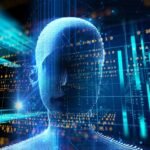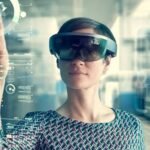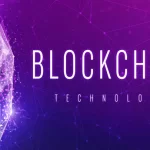A definitive guide to Information technology
Information Technology (IT) has become an integral part of our modern world, revolutionizing the way we live, work, and interact. From the devices we use to the systems that power businesses, IT encompasses a wide range of technologies, processes, and strategies. In this definitive guide to Information Technology, we will explore the essentials of this vast field, providing you with a comprehensive understanding of its key components and their significance.
- Understanding Information Technology:
Information Technology refers to the use, development, and management of technology and systems to store, process, transmit, and retrieve information. It encompasses hardware, software, networks, databases, cybersecurity, and more. IT enables organizations and individuals to access, utilize, and protect information, driving efficiency, innovation, and connectivity.
- Key Components of Information Technology:
a. Hardware: IT hardware includes devices such as computers, servers, storage systems, networking equipment, and peripherals. These physical components form the foundation of IT infrastructure.
b. Software: IT software refers to the programs, applications, and operating systems that enable users to perform tasks, process data, and interact with hardware. It includes system software (e.g., operating systems), application software (e.g., productivity tools, databases), and middleware (software that connects different systems).
c. Networks: IT networks connect devices and systems, enabling communication and data transfer. They can be local area networks (LANs), wide area networks (WANs), or the internet. Network technologies include protocols, routers, switches, and wireless connectivity.
d. Databases: Databases are structured collections of data organized for easy storage, retrieval, and management. They store information used by applications and provide efficient means to access and manipulate data. Database management systems (DBMS) are used to create, maintain, and secure databases.
e. Cybersecurity: IT security focuses on protecting information and systems from unauthorized access, data breaches, and cyber threats. It includes measures such as network security, data encryption, access controls, antivirus software, and incident response planning.
f. Cloud Computing: Cloud computing allows users to access computing resources (e.g., storage, processing power, applications) over the internet. It offers scalability, flexibility, and cost-efficiency by leveraging remote servers hosted by cloud service providers.
- IT Roles and Career Paths:
The field of IT offers diverse roles and career paths, catering to different interests and skill sets. Some common IT roles include:
- Software Developer/Engineer
- Network Administrator/Engineer
- Systems Analyst
- Database Administrator
- Cybersecurity Analyst
- IT Project Manager
- Data Scientist
- IT Consultant
Continuous learning and professional development are vital in IT due to the rapid pace of technological advancements.
- Importance of IT in Business:
IT plays a critical role in modern business operations, offering numerous benefits:
- Streamlined processes and increased efficiency
- Enhanced communication and collaboration
- Improved decision-making through data analysis
- Expanded market reach and customer engagement
- Enhanced security and risk mitigation
- Automation of repetitive tasks
Businesses that leverage IT effectively gain a competitive edge, improve customer experiences, and drive innovation.
- Emerging Trends in Information Technology:
IT continues to evolve, shaping our future. Some emerging trends to watch include:
- Artificial Intelligence (AI) and Machine Learning (ML)
- Internet of Things (IoT)
- Edge Computing
- 5G Technology
- Cybersecurity advancements
- Quantum Computing
- Augmented Reality (AR) and Virtual Reality (VR)
Staying informed about these trends helps individuals and organizations stay ahead and leverage new opportunities.




























